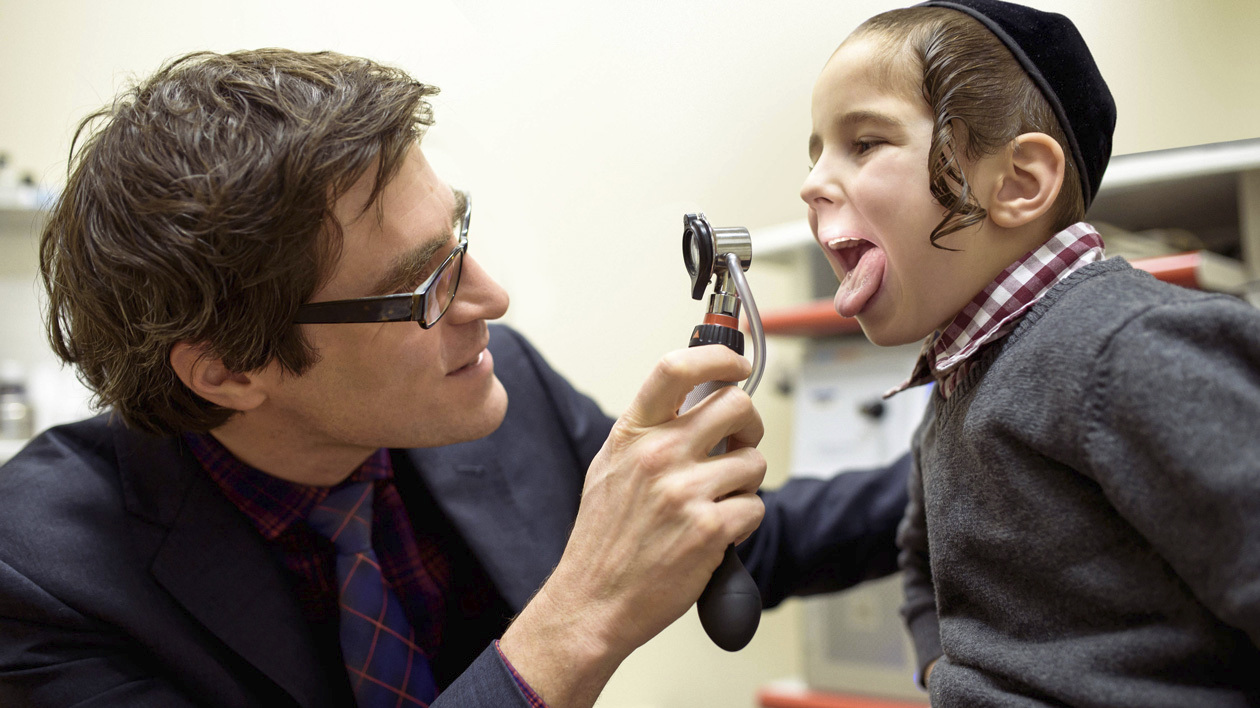Main content
We use cookies and similar tools to give you the best website experience. By using our site, you accept our Websites Privacy Policy.
Adenoid tissue, located in the back of the nasal cavity, is a single patch of tissue that contain lymphocytes—white blood cells that help to fight off infections from viruses or bacteria. The tonsils, two small glands on either side of the back of the throat, also contain lymphocytes.

Adenoid tissue and tonsils continue to grow until a child is about eight years old. At that point, adenoid tissue may begin to shrink and eventually disappear. The tonsils may also shrink somewhat, although they remain in place for life.
Occasional swelling of the tonsils and adenoid tissue is common during childhood. Bacterial and viral infections or exposure to allergens or pollutants may cause adenoiditis, an enlargement of the adenoid tissue. Swollen tonsils, also known as tonsillitis, are usually caused by bacterial and viral infections. Many children experience these conditions at the same time, although enlarged adenoid tissue tends to be more noticeable in younger children because it can block tiny nasal passages.
Enlarged tonsils and adenoid tissue can cause symptoms such as a stuffy nose, sore throat, and a scratchy voice. Children with chronically enlarged adenoid tissue may also have frequent ear infections, sinusitis, hearing problems, and upper respiratory infections. These conditions can also lead to a breathing disorder called obstructive sleep apnea, which causes snoring and gasping for breath during sleep and sleepiness, and occasional hyperactivity during the day.
Your pediatrician may refer your child to an ear, nose, and throat specialist, also known as an otolaryngologist, for an exam if your child has repeated upper respiratory infections and significant discomfort. Otolaryngologists at Hassenfeld Children’s Hospital at NYU Langone examine your child to determine the cause and severity of the condition and to identify the most effective treatment. In addition to asking about your child’s symptoms and medical history, our doctors may perform the following tests.
During an upper respiratory exam, a doctor asks you or your child about any recent illnesses, allergies, or symptoms, such as a stuffy nose or sore throat. The doctor may also look into your child’s mouth to examine the tonsils. White patches on the tonsils may indicate a bacterial infection, such as group A Streptococcus, which causes strep throat. Tonsils that look red and swollen often mean that your child has a viral infection. The doctor may feel the sides of your child’s neck to see if he or she has swollen lymph glands, another sign of a bacterial or viral infection.
To obtain samples that can be tested for the bacterium that causes strep throat, a doctor or a nurse may swab the back of your child’s throat with a cotton-tipped stick. Bacterial infections are a common cause of tonsillitis. Using one of the samples, the doctor performs a rapid strep test in the office to determine immediately if the bacterium that causes strep throat is present. The remaining samples may be sent to a laboratory for assessment—a procedure called a throat culture test—to confirm the findings of the rapid stress test. Laboratory test results are usually available within three days.
The doctor may perform a nasal endoscopy, a convenient and reliable method of assessing whether your child’s adenoid tissue is inflamed or enlarged. In this test, the doctor sprays the child’s nose with an anesthetic and then inserts a narrow, flexible tube with a tiny fiber-optic camera attached to it. This offers a detailed view of adenoid tissue and the back of the nasal passages. The anesthetic ensures that your child feels little or no discomfort during the procedure, which usually takes less than a minute to perform.
The doctor may refer you to an allergist at Hassenfeld Children’s Hospital if your child’s adenoid tissue remains enlarged when there is no evidence of infection. An allergist may use skin tests and blood tests to find out whether your child develops antibodies and other reactions to a variety of substances found in the air and in foods. This can signal the presence of allergies, which are a common cause of enlarged adenoid tissue.
Your child’s doctor may recommend an overnight sleep study, or polysomnogram, as part of the Pediatric Sleep Disorders Program at Hassenfeld Children’s Hospital if the child has enlarged tonsils or adenoid tissue and seems to be having difficulty sleeping at night. The sleep study can help to determine whether these conditions are causing a breathing disorder called obstructive sleep apnea.
Children with sleep apnea frequently snore and gasp for breath at night. These interruptions to sleep can cause excessive daytime sleepiness. Disturbances in a child’s sleep–wake cycle can also cause frequent awakenings to use the bathroom, bed-wetting, or sleepwalking.
The doctor recommends the best treatment for your child based on the cause of the enlarged tonsils or adenoid tissue and the severity or frequency of your child’s symptoms.
We can help you find a Hassenfeld Children’s Hospital doctor.
Call 646-929-7970
or
browse our specialists.